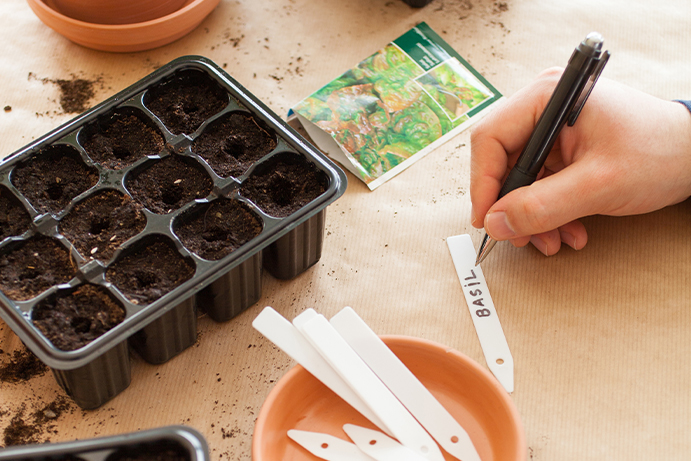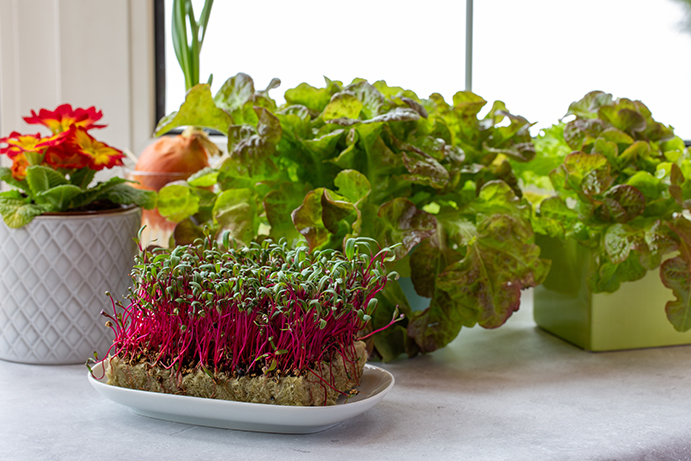10 Amazing Tips On How to Start Your Indoor Vegetable Garden!
Guest Blog - By Tony Manhart
In this article, we will give you tips on how to start your indoor vegetable garden. Tomatoes, aubergines, and peppers, for example, require a longer growing season. Most gardeners plant the seeds for these veggies inside in the spring to improve overall growth. Starting your own seeds not only saves money over buying transplants but also promises a more profitable harvest season. It's also a fun and fulfilling way to start the gardening season!

Tips for Starting Your Indoor Vegetable Garden
Tip #1: Buy your seeds from a trusted vendor
Fresher, higher-quality seeds have a greater germination rate (meaning more sprouts), giving you an advantage in growing tasty, healthy veggies.
Tip #2: Pot with the seed-starting mix
Although these mixtures do not contain any actual soil, they are perfect for sprouting seedlings. They also provide an excellent combination of drainage and water-holding capacity, as well as preventing disease troubles in vulnerable seedlings. If possible, avoid using garden soil while starting seedlings indoors.
Tip #3: Check for drainage holes in your containers
You may use recyclable pots, such as empty yoghurt containers, but make sure to drill drainage holes in the bottom so your seedlings don't get too wet. Plastic flats and six-packs are also great options since you can reuse them year after year. You can use biodegradable pots as well.
Tip #4: You should plant the seeds at the right depth
Planting depth should be determined by the seed packaging. You don't need to be perfect with your measurements, but make sure you don't plant any deeper than the recommendations say. Plant the seed two to three times as deep as it is wide, according to the rule of thumb. Tiny seeds, for example, should be barely covered with soil mix, but big seeds, such as beans, should be planted approximately an inch deep.
Tip #5: Set the pots in a warm spot after sowing
Ideal areas are frequently on top of the refrigerator or near a radiator. Check your pots for signs of improvement every day!
Tip #6: Keep the seed-starting mix wet at all times
Both air and water are required for the roots of the seedlings. Keep the mixture humid but not covered by water.
Tip #7: Place the pots in a bright position when the seedlings appear
A sunny window would work, but if you can use extra fluorescent lights to provide steady light will bring the best outcome. Suspend the lights an inch or two above the plants' heads.
Tip #8: Seedlings like a cool indoor temperature
If you can find a cooler room in your house, or you can use your garage, while still having a good light source, it will help the seedlings thrive.
Tip #9: Begin with weekly fertilization
Once your seedlings have one or two pairs of leaves, use a half-strength fertilizer. Organic fertilizers are a fantastic option since they supply a variety of nutrients as well as micronutrients.
Tip #10: Trim the seedlings once they have two pairs of leaves
You only want to maintain one seedling per container, so pick the healthiest, most strong seedling. Cut the other seedlings at the soil line and throw them away.

What is the Best Fertilizer for Your Vegetable Garden?
You are asking yourself what is the best fertilizer for your vegetable garden? – We made a list for you, so keep reading to find out!
The compost tea
You can purchase compost tea or make it home for your veggie container garden. Compost tea is prepared by brewing the beneficial microbes that have been formed in a compost heap. It's an excellent all-natural vegetable fertilizer!
Eggshells
Eggshells are a fantastic organic fertilizer for container veggie crops! It's free, nutrient-dense, and simple to use! Plant cell walls are strengthened by the calcium carbonate in eggshells, while photosynthesis is boosted by magnesium.
Worms
Worm faeces is one of the most low-maintenance fertilizers you can use in your container veggie garden! You can start your own earthworm farm and gather your own.
Final Words on How to Start Your Indoor Vegetable Garden!
In conclusion, growing a vegetable garden indoors is quite similar to growing one outside. With our simple indoor vegetable gardening tips, you'll be well on your way to a rich harvest even without leaving your home!

About the Author
Tony Manhart is the founder and editor-in-chief at Gardeningdream. Tony’s enthusiasm and rich experience in all things related to growing plants have led him to share his knowledge with gardening aficionados all over the world. When he is not working around his garden, Tony spends his time writing tips and tricks on various subjects related to plant cultivation and soil maintenance.










